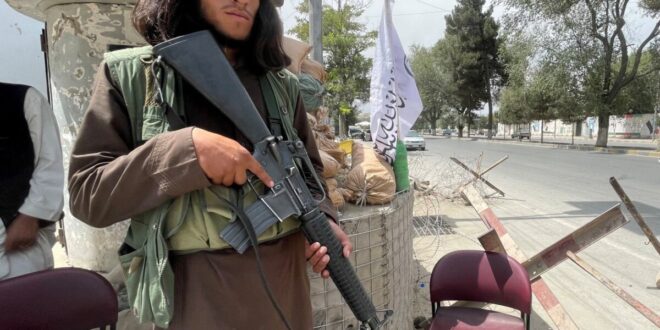Patrick Fox
Whatever the final disposition of coalition forces in Afghanistan, personnel trapped in Taliban-controlled territory must be secured and evacuated.
The current situation in Afghanistan grows more dire by the day for the fate of the thousands of American, coalition, and Afghan civilians trapped by the Taliban. The last time the United States was faced with comparable thousands of its civilians trapped behind enemy lines was 1942 when the Japanese invaded and overran the Philippines. Back then, the outcome for U.S. civilians and prisoners of war was brutal beyond belief. Fortunately, the situation in Afghanistan should not require three years and a sixteen-division invasion force to rectify. What it will require is a willingness to embrace harsh expediency, to a degree not evidenced by the U.S. military in decades.
Conditions in Afghanistan are fluid. For the moment the Taliban seem to be limiting themselves to harassing and curtailing the movement of foreign nationals to Hamid Karzai International Airport (HKIAP), rather than abducting them or worse. There is no guarantee that restraint will continue. The United States should prepare for this status quo to deteriorate rapidly once the euphoria of the Taliban’s victory dissipates and they begin to exercise a greater degree of control over their various forces.
To this end, there are multiple avenues of approach toward achieving what must be the overarching objective of NATO forces: securing and evacuating all coalition personnel, civilian and military. The methods will depend largely on how the Taliban behaves, but they can be broadly anticipated. Local Afghans are a secondary objective. Despite current emotional appeals, even vetted Afghans actively operating with coalition forces have a long history of betrayal. While those who are loyal and deserving of U.S. assistance should not be abandoned, blanket assumptions of loyalty will only lead to the direct importation of enemy combatants into the United States and coalition nations. Rigorous vetting will be complicated, time-consuming, and imperfect. It is also vital to prevent one last additional disaster that will have internal ramifications for years to come.
Broadly speaking there are three possibilities moving forward, with some overlap between them. Each of these will be impeded by the almost unbelievable fact that neither the U.S. State Department nor the Defense Department can accurately identify how many coalition nationals need to be evacuated out of Afghanistan, or where they are in the country. This colossal and astonishing failure makes it infinitely more likely that eventually some number of coalition nationals will end up in Taliban custody and need to be retrieved.
The first scenario, and the easiest to deal with, would be a slight modification of the status quo. The Taliban continues some harassment of Westerners fleeing to HKIAP, but ceases to prevent them from actually reaching the airport. While humiliating for the United States, it is also broadly acceptable in that it accomplishes the goal of eventually securing most coalition nationals currently in the Kabul area. Unfortunately, though reports are conflicting, some Westerners appear to be trying to shelter in place in the wake of State Department and Defense Department warnings that they cannot be protected as they travel through Kabul to HKAIP.
The fact that American forces are not entering Kabul proper to conduct Search and Rescue (SAR) operations during this lull in hostilities is another major leadership failure and likely to result in some isolated personnel, too afraid to risk venturing onto the streets, being left behind if the August 31 withdrawal date is adhered to. The British 2nd Battalion, the Parachute Regiment (2 Para), is under no such constraints. British Ministry of Defense and on the ground reports confirm 2 Para, along with Canadian, French, and Spanish Special Forces, are foraying into the city specifically to secure their own nationals, but are also taking custody of any Westerner they encounter. This must be emulated by the Americans immediately before they squander the gift of Taliban preoccupation with their victory.
Active SAR for trapped personnel, while the Taliban is still in a state of relative restraint, is the only possible way that all trapped personnel can be secured before the coalition is eventually forced to confront the necessity of negotiating for their release from the Taliban. Even if these efforts are enacted immediately by American forces, 100 percent retrieval is unlikely. The odds are excellent some will be left behind and fall into Taliban hands.
The pressing question then becomes how we would retrieve U.S. personnel if and when they are taken into Taliban custody. Broadly speaking, there are two options with some overlap: negotiation and force.
Negotiation is the preferable first option. Ideally, we assure the Taliban that prompt return of U.S. personnel will ensure we adhere to the August 31withdrawal date. The Taliban, anxious for foreign military personnel to depart, then hand them over. This is theoretically plausible but unlikely.
The more probable scenario is that the Taliban demand some form of ransom or finder’s fee for “protecting” coalition personnel in their custody. This could take the form of international recognition from the United States, international aid, direct payments (as was done for convicted deserter Bowe Bergdahl) or assurances that allied forces will not take steps to destroy the military equipment that the Taliban has seized from Afghan forces. One possible pitfall to such an exchange is the uncertainty that all captive Westerners would be returned by the Taliban. The Taliban could easily, as the North Vietnamese did, release a few at a time while constantly claiming to “find” more allied personnel in order to increase their reward from any such exchange. Coalition nations would then be on the hook to continually pay as more of their nationals were “discovered” to secure their release. This could perhaps be countered by coalition threats to stay until all their nationals are turned over, but this is again hampered by the fact that the United States does not have accurate data on how many of its citizens remain in the country and where they are located.
The more dangerous scenario is that the Taliban could openly hold some allied personnel as bargaining chips, either to incrementally boost any ransom payments or to ensure coalition withdrawal from Afghanistan within the agreed timeline. Or, most dangerously, to be used overtly as hostages to leverage concessions from NATO members under threat of their execution. This would trigger the use of the second option to secure U.S. personnel with force once negotiations break down.
Once negotiations break down, U.S. forces must be prepared to execute a “heavy” military response to position U.S. forces for the task ahead and to send an unambiguous message of U.S. resolve. This will require the simultaneous execution of three operations. The first will be an insertion of the 82nd Airborne Division (minus its ready brigade already tasked to HKIAP) to recapture Bagram Airbase. A secure airhead remote from any major urban center with multiple runways and a defensible perimeter will be crucial to subsequent operations and provide a mooring point to which surviving Afghan forces still in the fight can rally or be evacuated to via American airlift.
The second would be the airlift of additional U.S. troops in the country to Bagram Airbase. The 10th Mountain Division, the 101st Air Assault Division, and the remainder of the 24th Marine Expeditionary Unit would be prime candidates. This movement should coincide with U.S. Air Force deployment of two to three squadrons of ground attack aircraft, the A-10 Warthog and AC-130 gunship equipped units would be ideal, supported by an air superiority or multi-role capable squadron. The former will act in the traditional ground support role while the latter’s mission will be the complete destruction of any Taliban air assets. The Air Force would also be required to conduct a marshaling of Air Mobility Command assets to affect the aforementioned movement and subsequent withdrawal of ground forces and civilians.
The third operation would involve the capture of the family of every member of the Taliban leadership currently identified, by units assigned to Joint Special Operations Command. As former President Donald Trump indicated in a statement to Sean Hannity last week, we know where they are. These individuals would then be extracted to secure facilities on Bagram Airbase.
Operations to secure trapped American/coalition civilians would then proceed as follows. Once Bagram Airbase is secure, American ground forces would proceed to establish collection points around the outskirts of Kabul to which trapped personnel would be instructed to rally. Instructions could be delivered via the internet or broadcast by loudspeaker from helicopters. Additional collection points or dedicated recovery operations would also be mounted to secure or free coalition nationals stranded outside Kabul. Coalition forces would sweep Kabul (and any other suspected locations) to ensure compliance and the completion of a full evacuation.
The ultimatum to the Taliban would be simple. Free all coalition prisoners and cease interdicting the movements of non-Afghans towards HKIAP or a collection point. Any opposition to U.S. recovery operations would be met with immediate and unrestrained combat operations by all forces in theatre against any and all identifiable Taliban targets. Any engagement of coalition forces would also precipitate the transfer of Taliban-affiliated prisoners into the custody of surviving Afghan National Government forces.
 Geostrategic Media Political Commentary, Analysis, Security, Defense
Geostrategic Media Political Commentary, Analysis, Security, Defense





